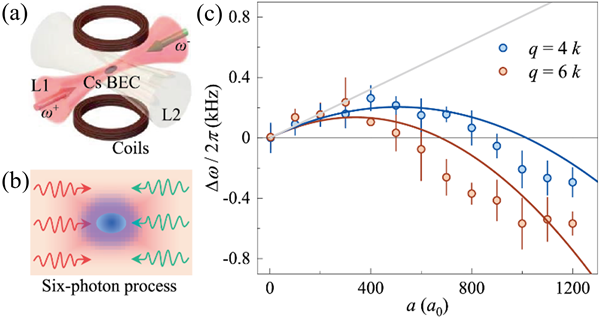Recently, the research group published a paper titled "Testing universality of Feynman-Tan relation in interacting Bose gases using high-order Bragg spectra" in the journal Light: Science & Applications. PhD students Yunfei Wang and Huiying Du are the co-first authors of the study, with Professor Jie Ma and Associate Professor Yuqing Li as corresponding authors. Professors Feng Mei, Ying Hu, Liantuan Xiao, and Suotang Jia also contributed significantly to this work.
Interactions between particles lie at the heart of strong-correlated quantum many-body physics. Identifying universal relations simplifies the microscopic characterization of interactions and aids in understanding the underlying physical laws in complex quantum systems. Ultra-cold atomic quantum gases, with their high controllability, offer an ideal platform for exploring and testing such universal relationships.
In strongly correlated ultra-cold atomic gases, physicists have predicted the Feynman-Tan relation, which successfully describes the dependence of the resonance frequency shift in atomic excitation spectra on the atomic scattering length in the strong interaction regime. Notably, since the frequency shift in this relationship is inversely proportional to atomic mass, verifying the universality of the Feynman-Tan relation in ultra-cold atomic systems is crucial for advancing studies of strongly correlated Bose gases.

The Cs atom, with its large mass, serves as an ideal experimental platform for testing the universality of the Feynman-Tan relation, which incorporates atomic mass. The research team employed hybrid evaporative cooling to prepare a quasi-one-dimensional ultra-cold quantum gas of Cs atoms. They further advanced high-order Bragg spectroscopy techniques, developing four-photon and six-photon Bragg spectroscopy based on the traditional two-photon method.
In experiments conducted at low magnetic fields ( ), they extensively tuned interatomic interactions in the ultra-cold gas. By measuring Bragg spectra under varying interaction strengths, the team investigated how the resonant excitation frequency shift depends on the scattering length. The results showed that as interatomic interactions increased, the frequency shift initially rose, then decreased to negative values—precisely following the curve predicted by the Feynman-Tan relation.
This work was supported by the National Key R&D Program of China, the NSFC Key International Collaborative Research Project, and the NSFC General Program.
